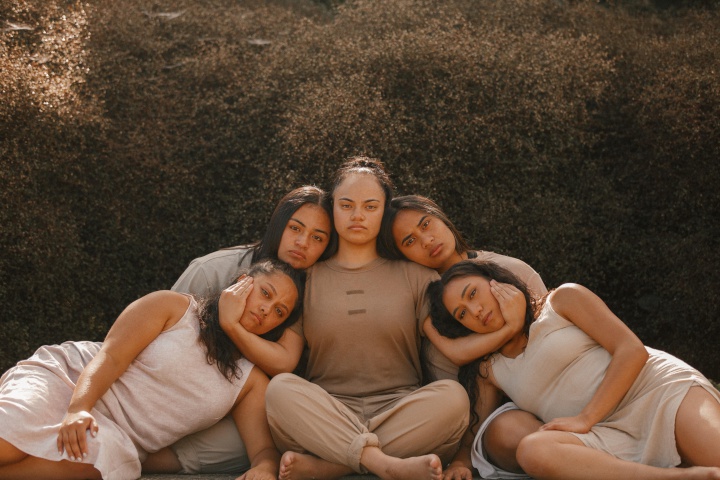Connecting through dance, close to home and away
TUESDAY, OCTOBER 29, 2019

Two students in their third year at the School of Dance, University of Auckland, have been awarded a Prime Minister's Scholarship set up to allow students to study abroad. Both will be performing at the School’s End of Year performances this month.
Alesha Wallabh is one of ten students from throughout the country who has been awarded a Scholarship to Asia, while Chas Samoa, who has won a Scholarship to South America, and will be travelling to Brazil. Their end of year performance will be held at the Mangere Art Centre, which will be close to home for the two South Aucklanders.
Chas Samoa discovered dance and its potential to bring people together after joining SOAR, a community initiative set up to support local youth from south Auckland. It was through SOAR that she met up with other young people to dance and which “provided a family-orientated environment that I didn’t necessarily have in other places”.
Chas started out as a hip-hop dancer but would now describe herself as an emerging indigenous contemporary artist, who is reconnecting with her Samoan and Māori culture and heritage through dance and choreography.
In her end of year performance she has choreographed a work in which she explores what it is to be a woman of Oceanic heritage, which will performed by nine women of Oceanic or Māori decent. “It’s an exploration of who we are, and envisioning ourselves as Oceanic women, through a decolonised lens of power.”
Chas is a champion of indigenous rights, and feelings of displacement have informed her dance and choreography. Her four weeks in Brazil, funded by the PM’s Scholarship she says, “will strengthen my understanding of similarities that I have with Brazilian indigenous people, but also our differences”.
Alesha will be going to India. She has visited there before, but only to Gujarat, which is where her family is from. She is New Zealand born and raised in Pukekohe where she still lives.
Alesha was taught to dance by her mother, Trusa, who had taught herself to dance by watching Bollywood movies, who then taught Alesha and her sister, Tanina, as well as children in their local community. They practiced and performed in myriad locations; in the lounge, in the garage, in the backyard. “I fell in love with the movement,” says Alesha. “I’d spend hours after school dancing in our garage to the point where oil would stain my feet.” She and her mother often performed Bollywood dances at Diwali festivals
“What I like about Bollywood dance is that anyone can do it. It’s about coming together, usually performed at weddings and birthdays, and about celebration. People feel good doing it.”
Her mother is delighted that her daughter is studying dance, although her own last performance was in 2012. “The reason being that there were a lot of people on phones and recording our dance, and my mum felt that disconnect between the dance and audience. She couldn’t see the audience’s faces.”
While the trip to India will involve students from a diverse range of disciplines, and will not focused on dance, she hopes that she might better understand the contemporary Bollywood industry.
“I’m particularly passionate and curious about the Bollywood industry in India, the social and political issues arising from globalisation and how this shift might impact on future generations.”
She has detected changes that she doesn’t necessarily like. If she had her way, she’d shift the Bollywood narrative back to the movies she grew up with in the 90s. “There was less objectification and more bringing people together. It was more joyful.”
She will be performing in other student’s choreographed dances in the end of year performances, but her own choreographed work she is exploring expressions of femininity, sensuality and power, through snakes and serpents. “I’ve always been fascinated by snakes,” she says. “Probably that’s a fascination derived from the Hindu god, Shiva, who had a cobra around his neck. I’ve always seen a connection between snakes and femininity, which is what I wanted to explore in this piece.”
End of Year Performances are open to the public, and on November 6, 9, 13 and 16 Mangere Events Centre. Register through Eventbrite
ends


 Emirates Team NZ: Emirates Team New Zealand Ranked #5 In Global Sports Technology Power List
Emirates Team NZ: Emirates Team New Zealand Ranked #5 In Global Sports Technology Power List Tātaki Auckland Unlimited: Discover The Treasures Of Tāmaki Makaurau - Making Māori Tourism Accessible To All
Tātaki Auckland Unlimited: Discover The Treasures Of Tāmaki Makaurau - Making Māori Tourism Accessible To All International Writers' Workshop NZ Inc: Ōtepoti Poets Top The Kathleen Grattan Prize For A Sequence Of Poems
International Writers' Workshop NZ Inc: Ōtepoti Poets Top The Kathleen Grattan Prize For A Sequence Of Poems NZ Amateur Sport Association: 22 Amendments Proposed For 2022 Act Lodged On 22 November
NZ Amateur Sport Association: 22 Amendments Proposed For 2022 Act Lodged On 22 November Auckland University of Technology: Reading Helps Children Face A Difficult Future
Auckland University of Technology: Reading Helps Children Face A Difficult Future PATHA: Puberty Blocker Evidence Brief Affirms Aotearoa’s Approach
PATHA: Puberty Blocker Evidence Brief Affirms Aotearoa’s Approach